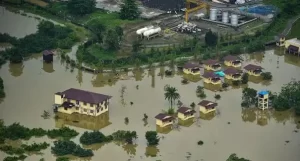As global climate change intensifies, extreme weather events such as hurricanes, floods, and extreme high and low temperatures are becoming more frequent and intense. These extreme weather conditions pose unprecedented challenges to the safety and durability of buildings. Prefabricated houses, as a modern construction method, have attracted much attention due to their rapid construction, cost-effectiveness, and environmentally friendly characteristics.
However, how well it performs under extreme climatic conditions is one of the key factors in assessing whether prefabricated houses can be widely used. In this paper, we will explore the performance of prefabricated houses under extreme climatic conditions and analyze their design features, material selection and actual cases to reveal their resilience and reliability in the face of natural disasters.

“How do prefabricated homes cope with the frequency of extreme weather?”
Design characteristics of prefabricated houses
Prefabricated houses, also known as assembled buildings, have components that are usually produced in factories and then assembled at the construction site. This type of construction not only improves construction efficiency, but also allows the house to fully consider various extreme climatic conditions at the design stage.
Modular design: The modular design of prefabricated homes allows architects to customize the design to the climatic characteristics of a particular region. For example, in hurricane-prone areas, the structural design of the home will be more wind-resistant, using stronger connections and thicker wall materials.
Structural Integrity: The structures of prefabricated homes are often constructed with high-strength materials such as steel, concrete, or high-performance wood, which perform well in extreme weather. In addition, precise computer simulations and testing ensure the stability and safety of the structure under extreme loads.
Thermal insulation: In areas of extreme high or low temperatures, the walls, roofs and floors of prefabricated homes are often equipped with highly efficient thermal insulation to minimize energy loss and maintain a comfortable indoor temperature.
The importance of material selection
The choice of materials is critical to the performance of prefabricated houses in extreme climatic conditions. Here are some key materials and their properties:
High-performance concrete: This type of concrete has higher strength and durability to resist extreme temperature and humidity changes, reducing the risk of cracks and corrosion.
Lightweight, high-strength steel: Steel is not only strong, but also easy to process and transport. In earthquake-prone areas, the flexibility of steel absorbs and disperses seismic energy, reducing structural damage.
Waterproof and Breathable Membrane: In flood-prone areas, the use of waterproof and breathable membranes can effectively prevent water infiltration while maintaining indoor air circulation and preventing mold growth.
Green building materials: environmentally friendly materials such as bamboo and recycled plastics not only reduce the environmental impact, but also show excellent weather resistance in some aspects.
Practical Case Studies
Hurricane Resistance: In Florida, USA, many prefabricated houses have performed well in multiple hurricane strikes. For example, prefabricated homes with steel frames and reinforced glass walls were virtually undamaged in Hurricane Irene, proving their strong wind resistance.
Flood Resilience: In Japan, some prefabricated homes are designed to float or be easily dismantled to cope with frequent flooding. These houses can be quickly raised or moved to safety when flooding occurs, reducing casualties and property damage.
Comfort in extreme heat: In Australia, prefabricated houses are kept cool in extreme heat through efficient insulation and intelligent temperature control systems, reducing air conditioning use and energy consumption.
Heat preservation in cold climate: In Scandinavian countries, prefabricated houses with double or triple-glazed windows, highly efficient heat insulation and geothermal energy system can keep the indoor warm and comfortable even in extremely cold weather.
Future Prospects
With advances in technology and innovations in building materials, the performance of prefabricated houses in extreme weather conditions will be further enhanced. For example, through the introduction of smart building technologies such as IoT, sensors and automated control systems, the environmental parameters of houses can be monitored and adjusted in real time to improve energy efficiency and living comfort. In addition, the development of more environmentally friendly and sustainable building materials will help reduce the environmental impact of prefabricated houses and realize the goal of green building.
In conclusion, the performance of prefabricated houses in extreme climatic conditions proves their reliability and adaptability as a modern construction method. Through scientific design, rational material selection and advanced technology application, prefabricated houses can not only withstand natural disasters, but also provide a safe, comfortable and energy-efficient living environment. With the continuing impact of global climate change, prefabricated houses will become one of the important development directions in the field of construction in the future.
Know more:https://baijiahao.baidu.com/s?id=1728615545848648366&wfr=spider&for=pc
Post time: 10-16-2024








